Let’s dive into different training methods and discover their pros and cons, and their impact on your body.
From the lean, aesthetic build of Men’s Physique competitors to the raw power of Strongmen, discover how diverse training methodologies and diets carve out distinct physical forms.
Whether you’re inspired by the functional strength of a CrossFit athlete or the classical beauty of a Classic Physique, this article offers insights and inspiration to achieve your goals.
Jump to:
- CrossFit: The Fusion of Fitness Disciplines
- Men’s Physique: Crafting the Aesthetic Ideal
- Classic Physique: The Renaissance of Bodybuilding
- Open Bodybuilding: The Pursuit of Maximum Muscularity
- Strongman: The Titans of Strength and Power
- Calisthenics Athlete Physique: The Art of Body Mastery
- Endurance Athlete Physique: Stamina Meets Strategy
CrossFit: The Fusion of Fitness Disciplines
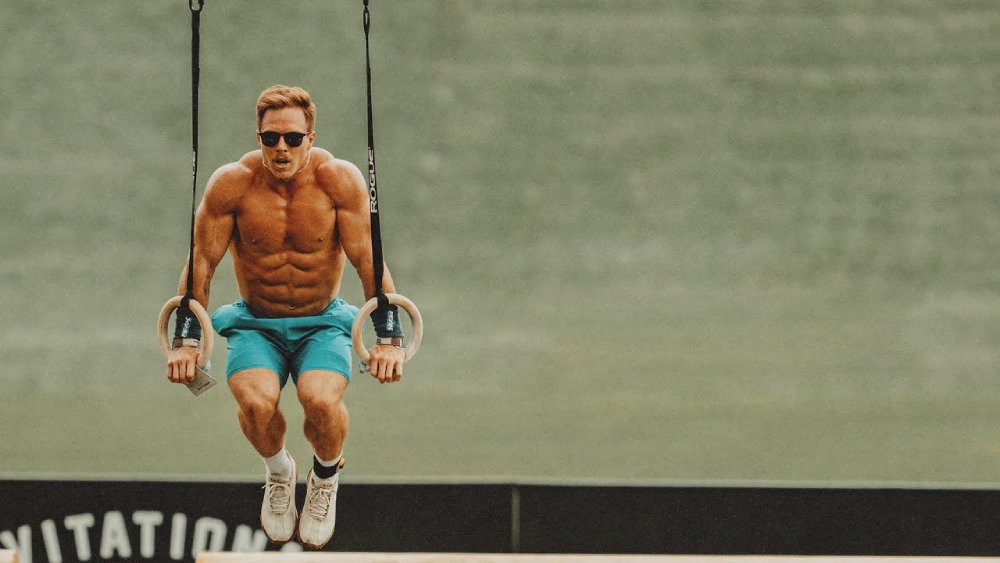
Training Methodologies
CrossFit stands out in the fitness world for its unique approach that combines high-intensity interval training, Olympic weightlifting, and gymnastics. This training methodology is designed to build not just strength or stamina, but a well-rounded, versatile fitness profile.
CrossFit workouts, known as WODs (Workout of the Day), are varied and often unpredictable, challenging athletes in different physical domains, from cardiovascular endurance to power, agility, and balance.
The essence of CrossFit lies in its emphasis on functional movements performed at high intensity. These movements are reflective of real-world activities, making the fitness gained through CrossFit applicable outside the gym. Olympic weightlifting components build raw strength and power, while gymnastics elements enhance agility, mobility, and body control.
The high-intensity nature of the workouts ensures that cardiovascular fitness is not neglected, making CrossFit a holistic approach to fitness.
Diet
Diet in CrossFit is as integral as the workouts themselves, often focusing on optimizing performance and recovery.
Many CrossFitters follow the Paleo diet, which emphasizes whole foods like lean meats, vegetables, nuts, and seeds, while avoiding processed foods, grains, and sugar.
Another popular choice is the Zone diet, which balances protein, carbohydrates, and fats in specific ratios to maintain optimal energy levels and body composition.
The key in CrossFit nutrition is to fuel the body adequately for the demanding workouts while also supporting muscle repair and recovery. This often means a higher protein intake, coupled with carbohydrates that are timed around workouts for energy and recovery. Healthy fats are also included to support overall health and hormone balance.
Pros and Cons
One of the biggest pros of CrossFit is its ability to develop overall fitness and versatility. CrossFitters often exhibit a balance of strength, endurance, speed, and flexibility that is hard to achieve through other training methodologies.
The community aspect of CrossFit also fosters a supportive and motivating environment, which can be a significant factor in maintaining a consistent fitness regime.
However, the high intensity and complex movements associated with CrossFit come with a risk of injury and/or muscle overuse. Proper technique and scaling of workouts to individual abilities are crucial to minimize this risk. The demanding nature of the workouts also requires a high level of commitment and can be intimidating for beginners.
Notable Athletes
Rich Froning and Mat Fraser are household names in the CrossFit community. Froning was the first to win the CrossFit Games four times consecutively. His exceptional strength, endurance, and strategic approach to workouts set a new standard in the sport.
Mat Fraser, who dominated the CrossFit Games with five consecutive wins, is renowned for his unmatched work ethic and consistency. Both athletes exemplify the pinnacle of CrossFit performance, inspiring a generation of athletes to push the boundaries of their physical capabilities.
Men’s Physique: Crafting the Aesthetic Ideal
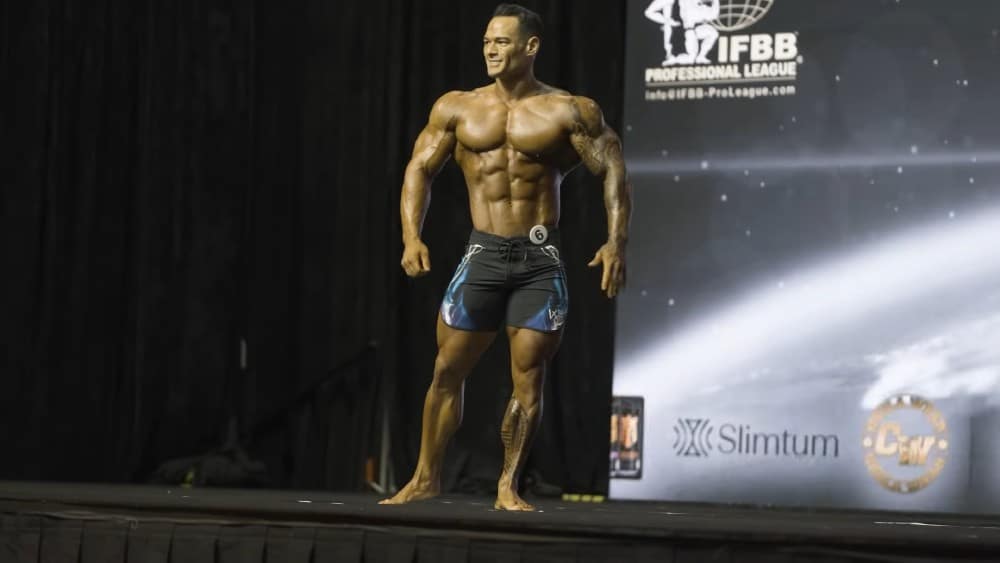
Training Methodologies
Men’s Physique competitors are the epitome of what many consider the ‘ideal’ beach body – a harmonious blend of muscle definition without the bulkiness often associated with larger bodybuilding categories. Their training regimen is a meticulous balance of moderate weightlifting and cardiovascular exercises.
These athletes spend countless hours perfecting their upper body, focusing on creating a symmetrical, aesthetically pleasing physique that showcases broad shoulders, a chiseled chest, and a tapered waist.
Weightlifting routines are carefully designed to enhance muscle definition rather than sheer size. This involves a mix of isolation exercises targeting specific muscle groups and compound movements that promote overall muscular balance and proportion. Cardiovascular training is equally crucial, not just for fat loss but for maintaining a lean, sculpted appearance.
Diet
Athletes in this category adhere to a diet rich in lean proteins, complex carbohydrates, and healthy fats. Protein sources like chicken, fish, and plant-based alternatives are staples, providing the essential building blocks for muscle repair and growth.
Complex carbs, including whole grains and vegetables, fuel their rigorous training sessions, while healthy fats from sources like avocados and nuts ensure optimal hormone production and overall health.
Caloric intake and macronutrient ratios are often adjusted based on training cycles and competition schedules, with a focus on maintaining muscle mass while reducing body fat to achieve that coveted stage-ready look.
Pros and Cons
The Men’s Physique category, while highly appealing, comes with its own set of challenges. On the upside, the aesthetic and attainable look of these athletes is widely admired and aspired to. It represents a physique that is muscular yet not overly intimidating, striking a balance that resonates with a broad audience.
However, this category often places less emphasis on lower body strength and development. While the upper body receives significant attention, the training does not always proportionately focus on leg strength and size, which can lead to an imbalance in overall physique development.
Notable Athletes
Jeremy Buendia and Ryan Terry stand as luminaries in the Men’s Physique world. Buendia, a four-time Mr. Olympia Men’s Physique Champion, is renowned for his impeccable symmetry and stage presence.
Ryan Terry, another top competitor in this field, brings a level of conditioning and aesthetics that sets the standard in Men’s Physique competitions. These athletes not only represent the pinnacle of aesthetic physique but also embody the dedication and discipline required to achieve such a revered form.
Classic Physique: The Renaissance of Bodybuilding

Training Methodologies
In the world of Classic Physique, the training methodologies are as much about art as they are about strength. This category harks back to the golden era of bodybuilding, where the focus was on achieving a harmonious, well-proportioned physique reminiscent of Greek statues.
The key here is a combination of hypertrophy and strength training, meticulously designed to enhance the V-taper – broad shoulders, a wide back, and a narrow waist.
Athletes in this category engage in a rigorous regimen that includes both heavy compound lifts for overall strength and isolation exercises for muscle definition. The goal is to build muscle mass that is not just impressive in size but also aesthetically pleasing and symmetrical.
Training sessions are intense and often split to target specific muscle groups, ensuring a balanced development that aligns with the classic physique ideals.
Diet
Diet in the Classic Physique category is as structured as the training itself. High protein intake is crucial for muscle growth and repair, with sources like lean meats, eggs, and dairy being staples in their meal plans.
Carbohydrates are selected carefully – often leaning towards complex carbs like whole grains and vegetables – to fuel the intense workouts while maintaining muscle definition.
Fats are not shunned but included in moderation, focusing on healthy sources like avocados, nuts, and olive oil.
Meal planning in this category is often strict, with athletes paying close attention to macronutrient ratios and caloric intake. This disciplined approach to nutrition is essential not just for building muscle but also for achieving the low body fat levels required to accentuate the classic physique’s defining features.
Pros and Cons
The Classic Physique category offers a balanced muscular look that is highly admired in the bodybuilding community. It represents a physique that is muscular yet not excessively bulky, maintaining a level of aesthetic appeal that is often associated with classical ideals of beauty.
However, achieving this balance requires strict dieting and a disciplined lifestyle, which can be challenging to maintain. The rigorous training and nutritional regimen demand a high level of commitment and can be taxing both physically and mentally.
Notable Athletes
Chris Bumstead and Breon Ansley are shining examples in the Classic Physique world. Bumstead, known for his impeccable symmetry and classic lines, has become a symbol of this category, winning the Mr. Olympia Classic Physique title multiple times.
Breon Ansley, another prominent figure, is celebrated for his aesthetic presentation and muscle definition, setting a high standard in the Classic Physique competitions.
Open Bodybuilding: The Pursuit of Maximum Muscularity
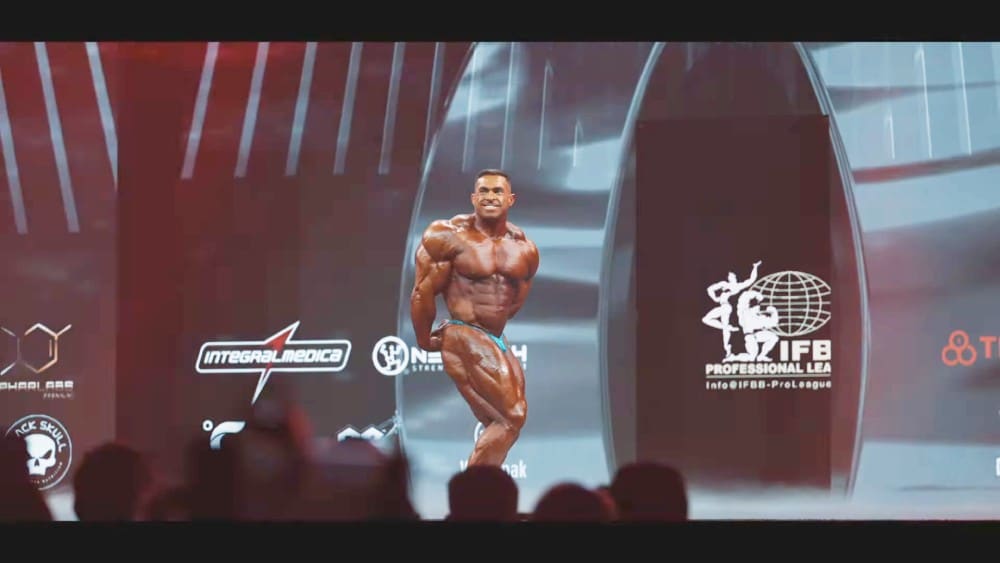
Training Methodologies
In the realm of Open Bodybuilding, the training methodologies are as intense as they are focused. This category is all about pushing the human body to its absolute limits in terms of muscle size and density.
Athletes in this field engage in heavy compound movements like squats, deadlifts, and bench presses, which lay the foundation for massive muscle growth. Alongside these, isolation movements are meticulously incorporated to sculpt and define each muscle group, ensuring no area is left undeveloped.
Training sessions are not just about lifting heavy but also about understanding the science of muscle hypertrophy. Repetition ranges, rest periods, and progressive overload are carefully calculated to maximize muscle growth.
Bodybuilders in this category often train multiple times a day, targeting different muscle groups in each session to allow for optimal recovery and growth.
Diet
The diet of an Open Bodybuilder is as colossal as their physique. A high-calorie, high-protein diet is essential to support the intense training demands and muscle recovery. Protein sources like lean meats, fish, eggs, and dairy are consumed in large quantities, along with a significant intake of carbohydrates to fuel their grueling workouts.
Fats are included but are carefully monitored to maintain the desired body composition.
Supplements play a critical role in this category. From protein powders and creatine to pre-workout formulas and recovery aids, these athletes leave no stone unturned in their quest for maximum muscle growth. The diet is not just about eating large quantities but eating strategically to support muscle growth and recovery.
Pros and Cons
The most evident pro of Open Bodybuilding is the achievement of maximum muscle size. Athletes in this category are walking embodiments of human potential in terms of muscular development. Their physiques are awe-inspiring, showcasing what is possible with dedication, discipline, and hard work.
However, this extreme level of muscularity can come with cons. The intense training and dietary regimen can be taxing on health and mobility. The sheer size and weight of the muscle mass can lead to joint stress and reduced flexibility. Moreover, the lifestyle required to maintain such a physique is incredibly demanding and not sustainable for everyone.
Notable Athletes
Ronnie Coleman and Jay Cutler are legends in the world of Open Bodybuilding. Coleman, an eight-time Mr. Olympia winner, is renowned for his incredible size and strength, often cited as one of the greatest bodybuilders of all time.
Jay Cutler, a four-time Mr. Olympia champion, is known for his impressive muscularity and symmetry. These athletes have set the bar incredibly high in Open Bodybuilding, inspiring a generation of bodybuilders to pursue the pinnacle of muscular development.
Strongman: The Titans of Strength and Power
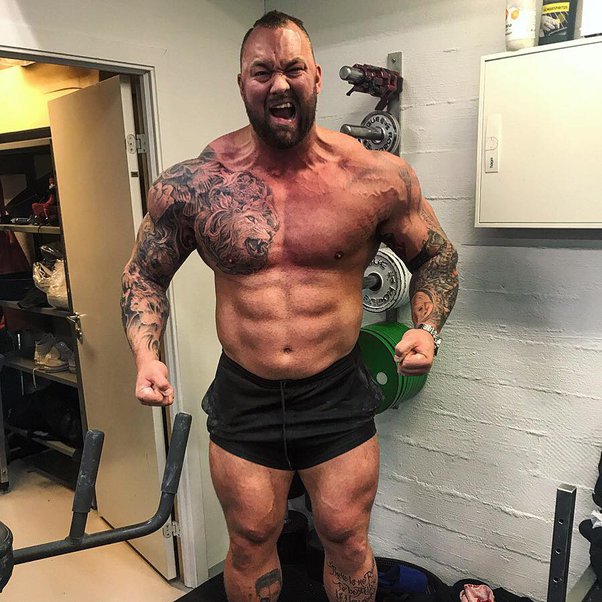
Training Methodologies
Strongman training is a testament to raw power and brute strength. This discipline focuses on lifting heavy and often unconventional objects, pushing the human body to its limits. Athletes in this field engage in exercises like tire flips, heavy log lifts, and atlas stone carries. These exercises are not just about lifting weights; they challenge the athlete’s grip, endurance, and mental fortitude.
The training regimen of a strongman is diverse, incorporating both traditional strength training and specialized techniques to handle the unique demands of strongman events.
This includes a mix of heavy compound lifts like deadlifts and squats, along with specific exercises that mimic competition events. Strongmen also focus on building a strong core and improving their cardiovascular fitness to support their immense strength during prolonged events.
Diet
Diet in strongman training is as colossal as the athletes themselves. A high-calorie intake is essential to sustain the energy and strength required for their rigorous training. These athletes consume a diet rich in proteins to support muscle growth and recovery, coupled with a significant amount of carbohydrates and fats to fuel their intense workouts.
Meal planning for strongmen often involves multiple meals and snacks throughout the day, ensuring a constant supply of nutrients to their bodies. The focus is not just on the quantity but also on the quality of food, incorporating whole, nutrient-dense foods to support overall health and performance.
Pros and Cons
The primary advantage of strongman training is the development of exceptional strength and power. Athletes in this field are capable of feats that seem almost superhuman. This strength is functional and translates well into real-world activities.
However, the high body weight and extreme physical demands of strongman training can have implications for long-term health. The sheer size and weight that strongmen carry can put a strain on the cardiovascular system and joints.
Therefore, it’s crucial for these athletes to monitor their health closely and balance their training with adequate recovery and medical supervision.
Notable Athletes
Hafþór Júlíus Björnsson and Brian Shaw are renowned names in the world of strongman. Hafþór, known for his role as “The Mountain” in Game of Thrones, is not just a screen giant but also a formidable strongman, having won the title of World’s Strongest Man. Brian Shaw, a four-time World’s Strongest Man winner, is celebrated for his incredible strength and strategic approach to competitions. Both athletes embody the spirit of strongman training, showcasing not just physical strength but also mental resilience and tactical prowess.
Calisthenics Athlete Physique: The Art of Body Mastery
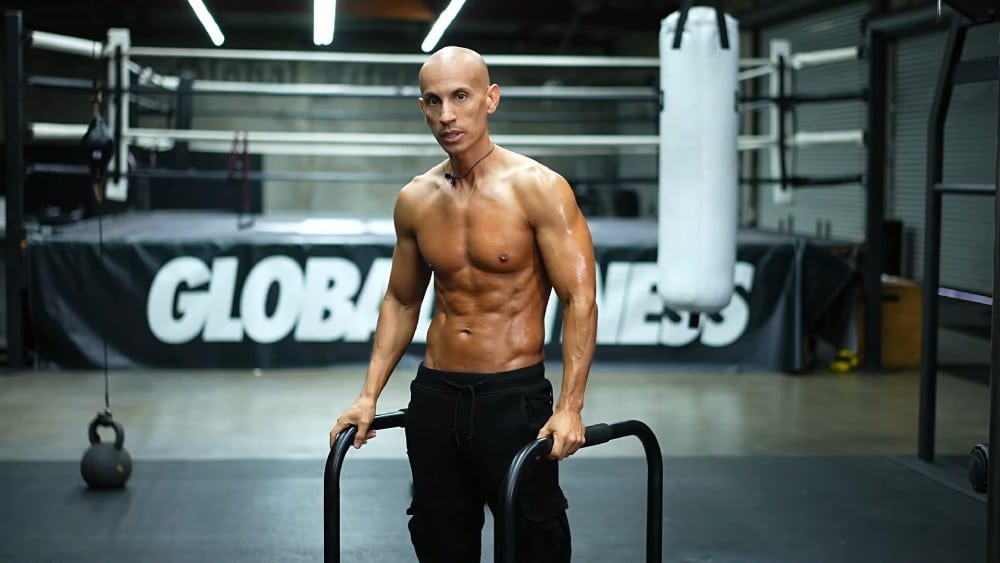
Training Methodologies
Calisthenics, the art of using one’s body weight as resistance, is a training methodology that emphasizes grace, control, and strength. Calisthenics athletes engage in exercises like pull-ups, push-ups, dips, and advanced movements such as muscle-ups, handstands, and human flags. This discipline requires not just strength but also a high level of body control and balance.
The training is progressive, starting from basic movements and gradually advancing to more complex and demanding exercises. Flexibility and mobility work are integral, ensuring that athletes can move their bodies through these ranges of motion safely and effectively.
Diet
The diet of a calisthenics athlete is tailored to support lean muscle growth and optimal body composition. High in protein for muscle repair and growth, it also includes a balanced mix of carbohydrates for energy and fats for hormonal health.
Nutrition plays a critical role in maintaining a body weight that allows for ease of movement while still being able to build and sustain muscle mass. Many calisthenics athletes also focus on nutrient-dense foods to support overall health and recovery.
Pros and Cons
The most significant advantage of a calisthenics physique is its functional aesthetic appeal. These athletes typically have lean, well-defined muscles, showcasing the beauty of human movement and strength.
However, one potential downside is that calisthenics training may not build the same level of maximal strength as weightlifting or powerlifting. The focus is more on body control and endurance rather than lifting heavy weights.
Notable Athletes
Notable figures in the world of calisthenics include Frank Medrano and Hannibal For King, who have both demonstrated incredible feats of strength and agility. Their performances inspire many to explore the limits of what the human body can achieve with discipline and dedication.
Endurance Athlete Physique: Stamina Meets Strategy

Training Methodologies
Endurance athletes are the epitome of stamina and perseverance. Their training focuses on long-duration cardio exercises that push the limits of human endurance. These athletes spend countless hours running, cycling, swimming, or engaging in other endurance activities, training their bodies to operate efficiently over extended periods.
Endurance training is not just about logging miles; it’s a strategic blend of intensity, duration, and recovery. Athletes often incorporate interval training, tempo runs, and long, steady-state sessions to build endurance. This approach improves cardiovascular health, increases lung capacity, and enhances the body’s ability to utilize oxygen during prolonged physical activity.
Diet
The diet of an endurance athlete is meticulously planned to support their extensive training demands. High in carbohydrates, their diet provides the necessary energy to sustain prolonged physical activity. Carbohydrates are stored as glycogen in muscles and are the primary fuel source during endurance events.
Proteins and fats also play a crucial role in an endurance athlete’s diet. Proteins are essential for muscle repair and recovery, while fats provide a concentrated energy source for longer, lower-intensity workouts.
Athletes often focus on nutrient timing, consuming the right balance of nutrients before, during, and after training to optimize performance and recovery.
Pros and Cons
The most significant advantage for endurance athletes is their exceptional cardiovascular health and stamina. They excel in activities that require sustained physical effort, showcasing remarkable resilience and mental toughness.
However, this focus on endurance can lead to lower muscle mass compared to athletes in strength-focused disciplines. Endurance training prioritizes efficiency and lightness, which often results in a leaner physique with less emphasis on muscle bulk.
Notable Athletes
Eliud Kipchoge and Mo Farah are shining examples in the world of endurance sports. Eliud Kipchoge, the marathon world record holder, is renowned for his incredible pace and endurance. Mo Farah, with his multiple Olympic gold medals in long-distance running, exemplifies the blend of speed and stamina that defines an elite endurance athlete.
Both athletes demonstrate the remarkable capabilities of the human body when trained for endurance, inspiring many with their dedication and achievements.















